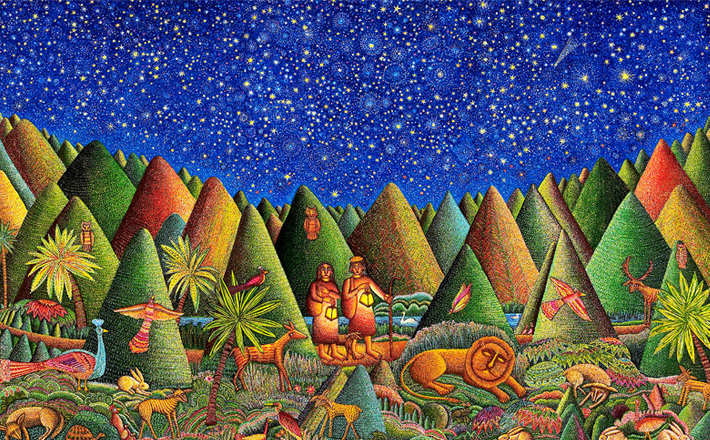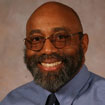Commentary on Amos 1:1-2; 5:14-15, 21-24
Amos might just be the most famous of the biblical prophets.
The Amos material had at least three different historical settings. It began as an event in the eighth century B.C.E. The followers of Amos shepherded the tradition, and it became part of a collection that provided a rationale for the exile during the period of Persian hegemony (539-332 B.C.E.). Finally, it was brought into the collection that we now call the Book of the Twelve or the Minor Prophets around 200 B.C.E.
The superscription, an editorial title that is meant to orient the reader to the passage or book, gives us a picture of the earliest historical background. The superscription that introduces the book of Amos identifies the ministry of Amos in terms of the reigns of Jeroboam II (circa 786-746 B.C.E.) and Uzziah (circa 783-742 B.C.E.). The Assyrian Adad-Nirari III (811-784 B.C.E.) was not able to press upon vassal states of Israel, and Judah, as would his successor Tiglath-Pileser III (745-727 B.C.E.) , would orchestrate the fall of Samaria/Israel.
When we consider the canonical location of the Book of Amos, we see two other historical settings that shape the interpretation of the piece. The book of Amos is the third book in the collection known as the Book of the Twelve. This group is sometimes called the Minor Prophets. The Book of the Twelve was collected on one scroll. The books may have been organized in what the editors thought was chronological order. The Book of the Twelve was not the first prophetic collection.
The opening of the book tells us that he came from Tekoa in Judah and came to Israel (the northern kingdom) to work as a prophet. The only other prophetic book with a Northern Kingdom location is Hosea. Some think these designations denote a migrant worker status for Amos, while others claim that he is a “gentleman” prophet. He was a shepherd and dresser of trees.
The second verse contains a Jerusalem fingerprint on these words that began in Israel. While the prophetic speech event occurred in Israel, the editor wants to shape the material for the edification of the people of Jerusalem and Judah. The word pair of Jerusalem and Zion occurs frequently (almost fifty times). The word pair occurs heavily in the book of Isaiah and in three books of the Book of Four (Amos, Zephaniah, and Micah).
One of the editorial devices we see in the book of Amos is the use of catchwords. The didactic sayings of chapter 5 use this device. Three times the editor connects the task of seeking and the result of living. The first occurrence, in verse 4, is in the first person: “Seek me and live.” The imperative is stated in the positive “seek,” but also in the negative as well. In the first occurrence, the negative is “not seek.” The opposite of God is the false sanctuaries of Bethel, Gilgal, and Beer-sheba (5:4-6).
The second occurrence shifts the imperative to a reference to the divine in third person. The third occurrence of the seek and live didactic sayings (verses 13-14) replaces the reference to the deity with a reference to good and replaces sites of apostasy with evil.
Good and evil can refer to behavior. Clearly the writer and editor want the reader to appreciate the ethical dimensions of the terms. Nonetheless, the term “good” can mean “good fortune,” just as “evil” can mean “disaster.” The text blends the ethical and the historical destiny. In other words, good leads to good fortune and evil leads to disaster.
The promise of the good fortune is the presence of the Lord the God of Hosts, a divine epithet, that likely points to the divine warrior tradition. The poetry creates a synonymous parallelism between “live” and the presence of God. This final “seek” saying has its negative. It has moved from the avoidance in the first occurrence to the active and affective language “hate.” Verse 15 reverses the didactic saying beginning with the negative and then moving to the positive. “Seek good, not evil” becomes “Hate evil and love good.” The structure accents the dichotomy. The good is defined as setting up justice in the gate, the location of village dispute resolution; it was the law-giving place and process in the time of Amos.
The promise is contingent; “perhaps,” the fierce divine epithet frames the contingent possibility that this dangerous God might be gracious. The recipient of the act of grace is the “remnant of Joseph.” The language of Joseph points to the northern kingdom as the inheritance of the tribe of Joseph. One can construe a movement from “live” in the first and second didactic sayings that talk about live. This third saying defines “live” as the promise that falls short of extinction. This notion of remnant would resonate to the audience in the Persian period and later, so one is not surprised that the saying is saved in the redaction of the Book of the Four and later in the Book of the Twelve.
The final verses (5:21-24) use the catchword “hate.” The listener was chided to hate evil. Now God is depicted as hating the liturgical pretense of humans. The critique of human false confidence in human liturgical acts occurs often in the Hebrew Bible in passages like Psalm 50:9 and Jeremiah 7:4.
The final imperative is verse 24. The metaphor has particular power when we remember the arid climate. The combination of vibrant waters is paralleled to the sustained waters. The prescribed language here reflects abundance, not lack. Abundance of justice and righteousness stands as a stark contrast to the world the prophet describes. This passage was quoted by Martin Luther King, Jr. in his “I have a dream” speech on August 28, 1963, and again in his “I’ve been to the mountaintop” speech the night before his death. Whether heard in the eighth or the twenty-first century, Amos calls through the ages.
PRAYER OF THE DAY
God of all people,
how us how to let justice roll down like waters, and righteousness like an every-flowing stream. Create justice and righteousness in us, that all may rejoice in your blessings. Amen.
HYMNS
Let justice flow like streams ELW 717
Let streams of living justice ELW 710
Glorious things of you are spoken ELW 647
CHORAL
Justice, Rollo Dilworth


November 10, 2013